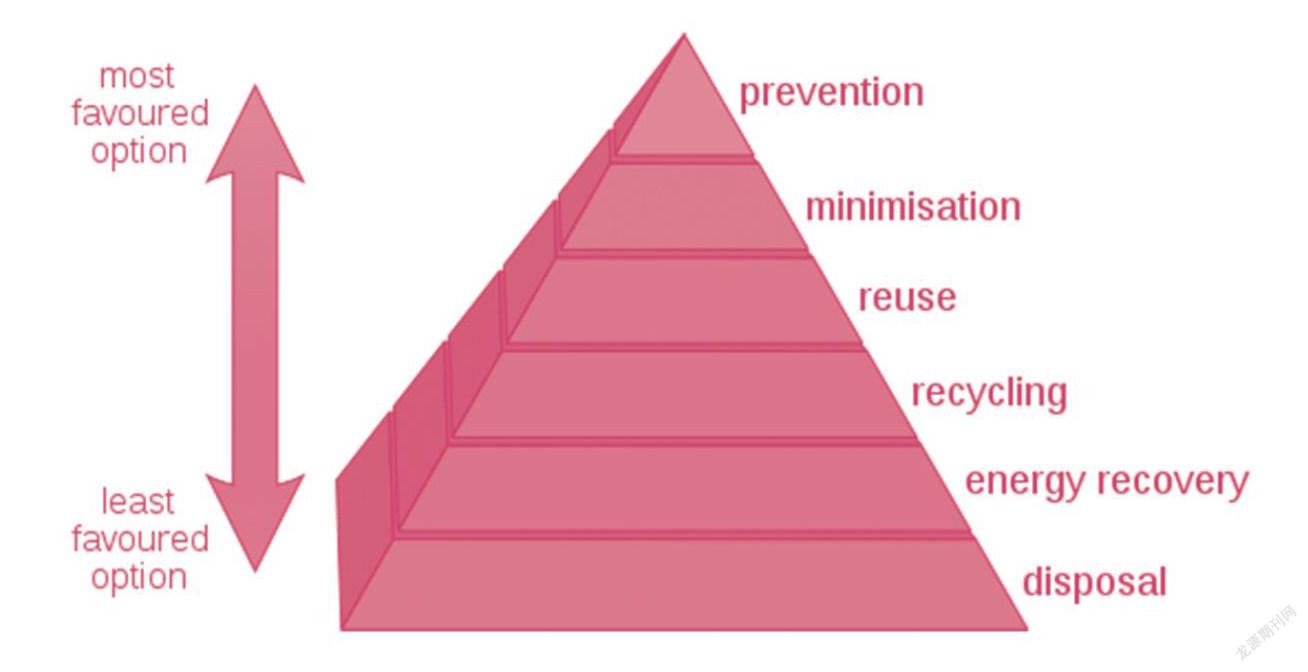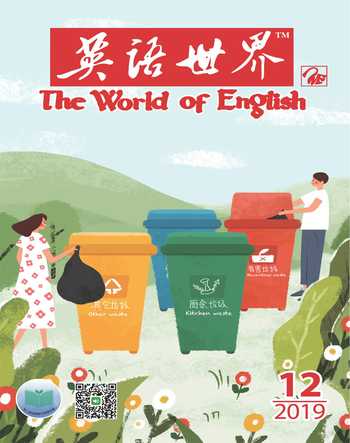生态文明新举措
秋千影

详读英文版《习近平谈治国理政》,我们会发现“生态文明”在英文版中通常表述为ecological progress,偶尔结合语境,亦可表述为ecological development。如以下两例:
建设生态文明,关系人民福祉,关乎民族未来。
Ecological progress is of vital importance to the future of the nation and the wellbeing of its people.
坚持以经济建设为中心,在经济不断发展的基础上,协调推进政治建设、文化建设、社会建设、生态文明建设以及其他各方面建设。
We must focus on economic development and promote coordinated political, cultural, social and ecological development on the basis of economic growth.
为了推进生态文明建设,我们国家采取了很多措施,而最新措施当是现今热议的垃圾分类(waste/garbage sorting, waste segregation)。今年起,我国地级及以上城市全面启动生活垃圾分类工作,到2020年年底,先行先试的46个重点城市,要基本建成垃圾分类处理系统。
在欧洲,早在1975年,就提出了垃圾管理办法(Waste Framework Directive),倡导减少废物,保护环境和人类健康。2015年,欧盟进一步提出了升级利用(INDUSTRIAL UPCYCLING)概念以及6R原则:RECOGNIZE—RECONSIDER—REALIZE—REDUCE—REUSE—RECYCLE。在美国,政府为垃圾分类提供了各种便利的条件,除了在街道两旁设立分类垃圾桶以外,每个社区都定期派专人负责清运各户分类出的垃圾。垃圾分类不仅是美国那样的发达国家的时尚,也是不少发展中国家的趋势。
概而言之,西方国家基本遵循以下垃圾管理标准:固体垃圾(solid waste);废水(waste water),其中包括农业废水(agricultural waste water)和工业废水(industrial waste water);核废料(radioactive waste)。
根据降解情况,垃圾又分为可生物降解的(biodegradable)和不可生物降解的(non-biodegradable)。如果从社区分类管理的角度,垃圾通常则分为干垃圾(dry waste)和湿垃圾(wet waste),具体如下:
☆ 废纸Paper
☆ 硬纸板Cardboard (including packaging for return to suppliers)
☆ 玻璃Glass (clear, tinted—no light bulbs or window panes, which belong with residual waste)
☆ 塑料Plastics
☆ 纺织品Textiles
☆ 木料、皮革、橡胶Wood, leather, rubber
☆ 废旧金属Scrap metal
☆ 枯草枯叶Compost
☆ 危险品Special/hazardous waste
☆ 生活垃圾Residual waste
在我国,最常见的分类方法为四类:可回收物(recyclable)、有害垃圾(hazardous)、干垃圾(dry)和濕垃圾(wet)。据说,上海市政府在垃圾回收点设专人协助居民进行垃圾分类,有人拎来垃圾时,他们会非常负责任地问:侬zi撒喇希(你是什么垃圾)?

